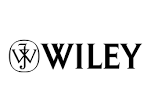Resource information
Nature conservation legislation affords different degrees of protection to specifically named species, ranging from recognition within the planning system to strict protection from harm and habitat loss. This review considers two groups of species that do not have strict protection but are recognised within âdevelopment controlâ (the process that regulates the planning of land use and new buildings), namely Annex II species of the Habitats Directive (HD) and Species of Principal Importance identified under UK legislation and policy. A critical point often forgotten by the HD's detractors is that Annex II is not only a list of species that require protection but also a list of species that represent criteria for the designation of protected sites. It is not feasible for all threatened species to be protected due to administrative and legal ramifications, so the subset of species listed need to have wider merit as umbrella species. The selection of widespread species on Annex II results in the creation of a better network of Special Areas of Conservation than if geographically localised or endemic species are used, and benefits a suite of rare and scarce species beyond those named in Annex II. Species of Principal Importance enable recognition of invertebrates in the UK planning system even though many of them are not directly threatened with national loss. Given the intense scrutiny to which nature conservation legislation is exposed, it is important for critics to understand the function of legislation and its application in the sociopolitical arena.



